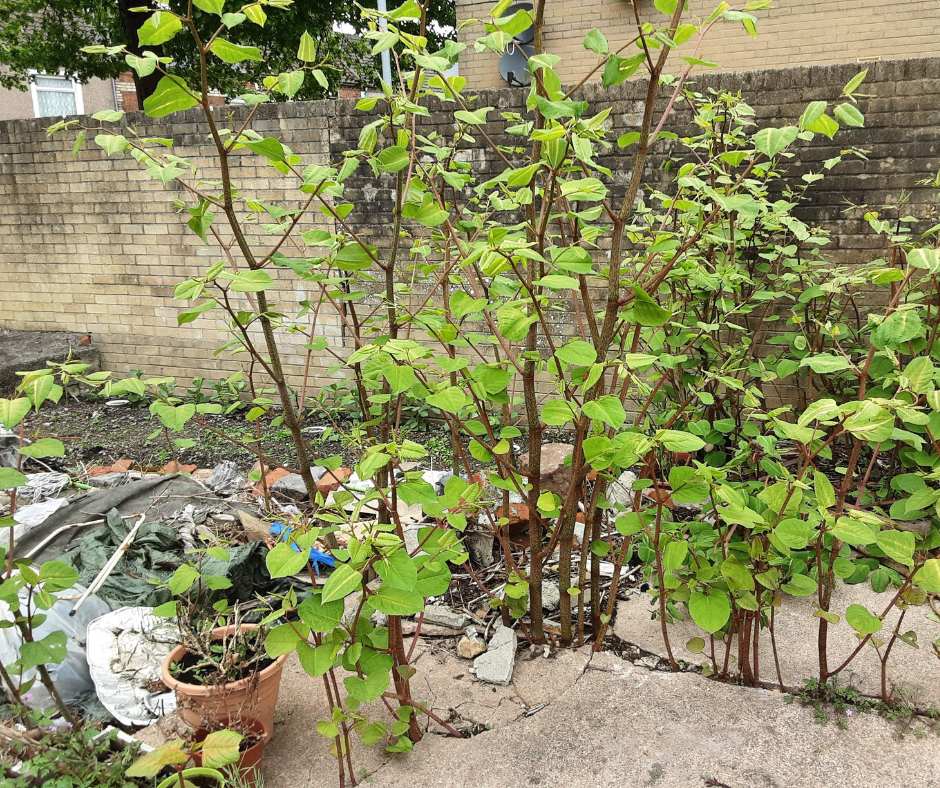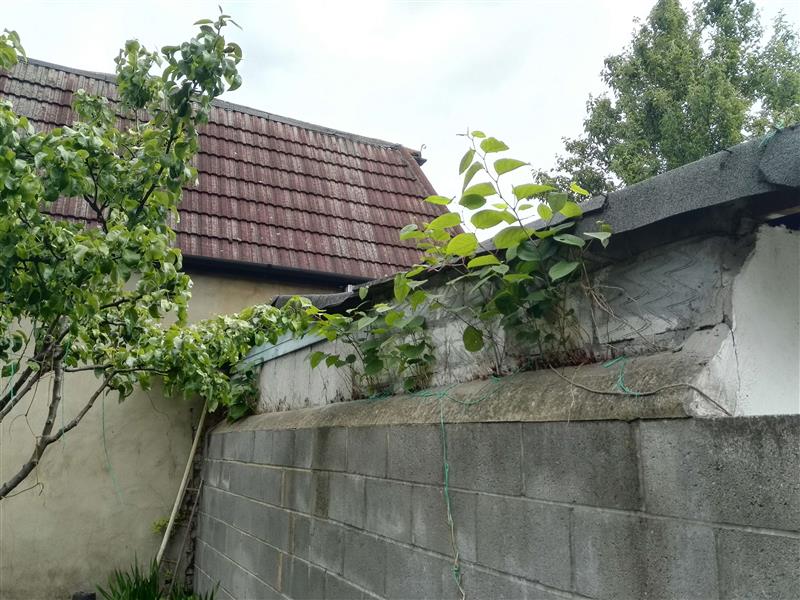
Find out what Japanese knotweed Damage looks like
Want to know what damage Japanese knotweed can do and what it looks like? This page shows just how harmful this invasive plant can be to structures, buildings and infrastructure.
What types of damage can knotweed cause?
This is a very popular question asked by homeowners, landowners and commercial businesses. Japanese knotweed exploits any weak areas or gaps in structures such as concrete, walls and mortar. Underground it can also cause damage to infrastructure such as sewers, drains, pipes and cables. As it grows it expands the weak areas causing damage.
We help thousands of customers across the country to manage and extract this invasive plant – we’ve seen it all, and the extend of the damage that it can do.
On this page we share some of the most common risks that knotweed can cause and answer your questions on Japanese knotweed damage.
Quick Links
- What is the problem with Japanese knotweed?
- Can Japanese knotweed cause damage to your house?
- How close to your house does Japanese Knotweed have to be to cause damage?
- Can Japanese Knotweed Damage Drains and Other Buried Services?
- Can Japanese Knotweed Invade Patios, Paths and Drives?
- Can Japanese Knotweed Damage Boundary and Retaining Walls or Fences?
- Can Japanese Knotweed damage Outbuildings?
- Can Japanese Knotweed damage Conservatories?
- Does Japanese Knotweed harm Gardens?
Page last reviewed 31.10.2025
What is the problem with Japanese Knotweed?
The problem with Japanese Knotweed is that it is a non-native invasive species of plant. It has no natural predators here in the UK, it is incredibly resilient, and it can ‘re-grow’ even after you remove or treat visible growth. Japanese knotweed’s underground rhizomes (roots) can grow to a depth of 2 meters and a width of 7 meters.
Because of this rhizome system, herbicides are only capable of controlling and slowing down knotweed. In fact, knotweed roots can create new plant growth to re-emerge for up to 20 years, especially if the ground is disturbed.
As the underground roots grow, they exploit cracks, mortar joints and other weak areas in buildings or hard surfaces. The pressure exerted by the plant growth can cause damage to:
- Your house
- Retaining walls
- Garden walls
- Fences
- Garden buildings
- Tarmac
- Drives
- Paved areas
- Drainpipes
- Underground infrastructure
In their search for moisture, Japanese knotweed rhizomes can interfere with drainage pipes and other structures, blocking and sometimes lifting pipework and clogging sumps and drainage pits. Other underground infrastructures are at risk, such as cabling and water pipes.
If you suspect that you have knotweed on your property, one of our experts can conduct a free survey for you to confirm and offer advice and treatment options if you do. Japanese knotweed won’t go away on its own and shouldn’t be ignored.

Can Japanese knotweed cause Damage to Your House?
In its drive to expand, Japanese knotweed will exploit existing weaknesses from ground level up. Above ground its stems will grow through any cracks or weak areas in property walls. Below ground the rhizomes can burst through weak or cracked concrete, foundations, and in amenity areas excessive growth will cause damage to fences, out-buildings and conservatories.
In addition to the damage root systems can cause Japanese knotweed grows large stalks that form tight light blocking clumps. The large green ‘shovel-shaped’ leaves can cover a vast area. This growth will block usable areas of the garden and also prevent natural flora and fauna from growing.
How close to your house does Japanese Knotweed have to be to cause damage?
According to the Environment Agency’s “The Knotweed Code of Practice”, Japanese knotweed rhizomes can extend up to seven metres horizontally and three metres vertically from the visible above-ground growth.
This means that even if there is Japanese knotweed a few metres from your property, the rhizomes could already be under your house. Once knotweed has spread under your house, it can exploit small access areas and invade your home.
Plants growing into the home is certainly a sight that no-one wants to find. We have seen this happen around the country and our removal specialists have worked to extract the growth from beneath houses and end the problem once and for all.
If you think that you have Japanese Knotweed on your property, or growing near your house, then you should act sooner rather than later. Our experts can provide free identification services as well as treatment options and advice.

Can Japanese knotweed Damage Drains and Other Buried Services?
Knotweed roots can exploit existing cracks and gaps in the pipes in their search for water, which will further damage and, in some cases, block the drains. Large, densely packed rhizomes can disrupt drain runs. In the worst cases, the drains must be renewed.
Can Japanese Knotweed Invade Patios, Paths and Drives?
Japanese knotweed is incredibly tough. It can grow between paving slabs and brick or block paving and the expansion joints of concrete drives and paths. It then pushes up through them as it expands, breaking, cracking and disrupting slabs. Not only can this be frustrating, but it can also create safety risks.

Can Japanese Knotweed Damage Boundary and Retaining Walls or Fences?
As Japanese knotweed grows, its mass and packed stands can cause damage to garden walls – especially those with shallow foundations – and old or poorly constructed fences. The thickly packed mass of knotweed can ‘push over’ these retaining walls and fences, resulting in sudden collapse or other safety risks.

Can Japanese Knotweed damage Outbuildings?
Due to the vigorous growth of Japanese knotweed, if left unchecked it will overwhelm light structures. This includes buildings like:
- Lightweight and unsubstantial outbuildings
- Garages
- Garden sheds
- Greenhouses
While it may be all-too tempting to ignore the overgrowth at the bottom of the garden, once the knotweed starts to create damage to these outbuildings, it is just a matter of time before the buildings are overrun. Because of this, it’s important to be able to identify and control or remove the growth as soon as possible.
Can Japanese Knotweed damage Conservatories?
Similarly, Conservatories can suffer the same fate as outbuildings. Knotweed will seek to exploit any weaknesses or cracks in the structure. And although the effects will be similar to those described for outbuildings, owners, valuers and surveyors tend attribute greater importance to these structures – which can have a greater effect on the value or enjoyment of your property.
Does Japanese Knotweed harm Gardens?
Due to the invasive nature of Japanese knotweed outside areas can be ruined. This is especially true for soft-ground areas such as landscaped gardens and green open spaces. As the knotweed grows and takes hold, it will take up space in the garden. The ‘stands’ of knotweed can grow up to 12 feet in height and have thick green leaves. As well as spoiling the area for you, these can block out light and prevent the growth of other natural plants.
If knotweed is left to grow without intervention, it can also ‘encroach’ onto other properties. If this happens, you could be liable for damages to their gardens, too.
If you think that you have knotweed somewhere on or near your property, then your best bet is to get in touch with us. At Japanese Knotweed Ltd we have experts who can help to identify signs of knotweed and offer treatment and extraction options.
Want to know if you have knotweed?
Why choose us
- SPECIALIST SERVICES TO AVOID KNOTWEED DAMAGE
- Free Identification service
- TREATMENTS AND GUARANTEES
- EXCAVATION OPTIONS














